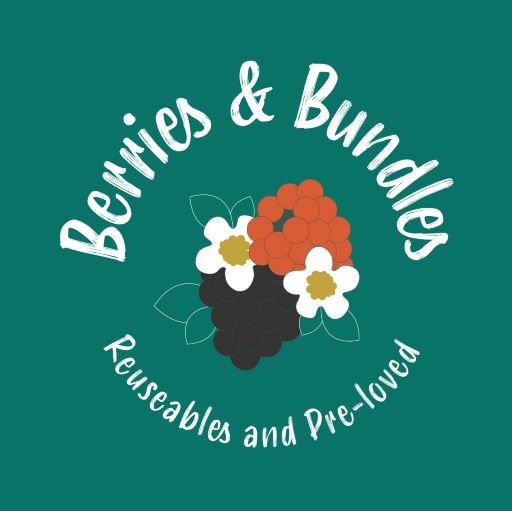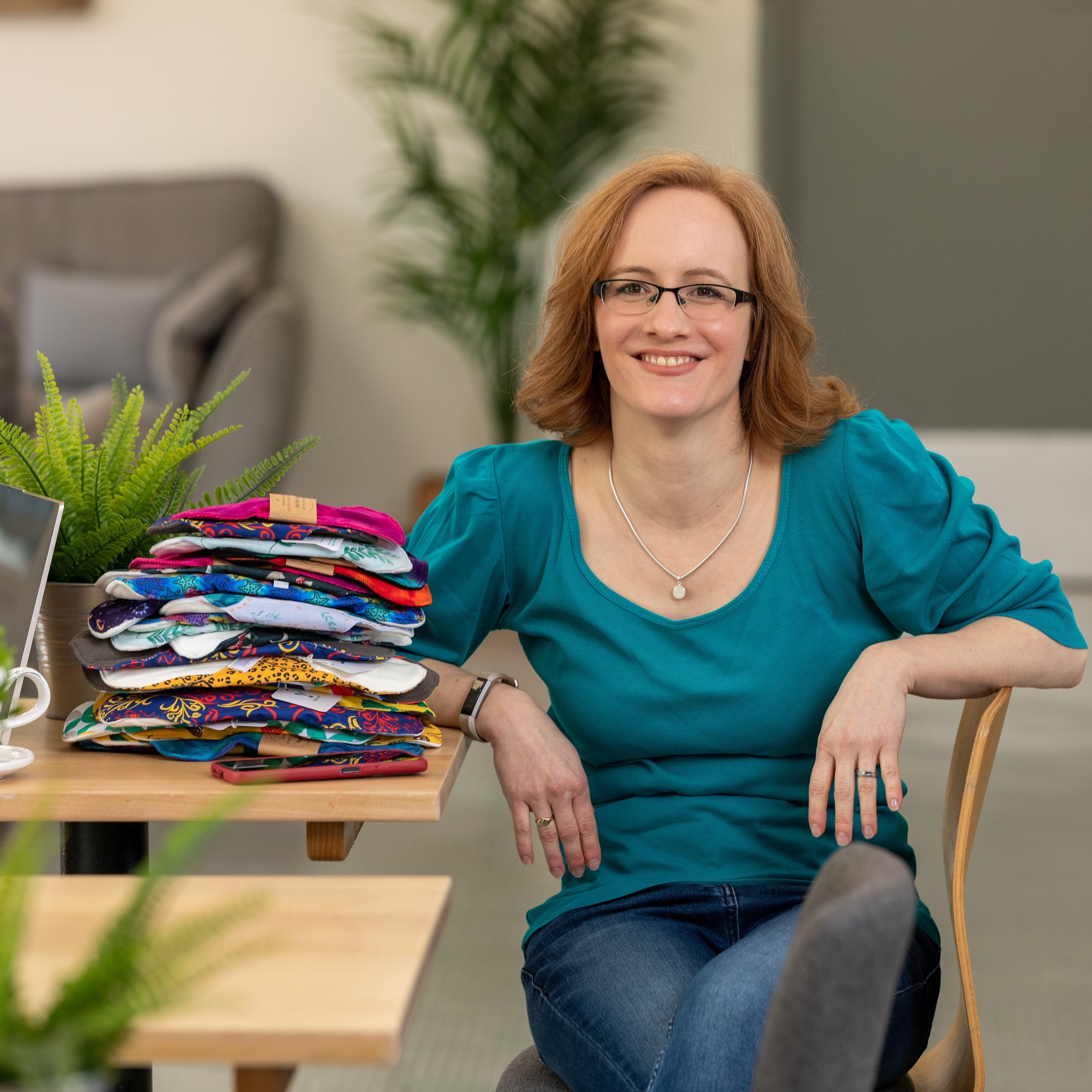Are reusable period pads hygienic?
Your reusable pads are easy to get clean and fresh without the need to soak or wash at high temperatures.
Given that for decades period blood has been replicated by using mysterious blue liquid in advertising, and not even a realistic red colour; it’s not surprising that we grow up with the perception that our period blood is somehow and dirty unhygienic.
But there really is nothing to fear.
Modern detergents are definitely powerful enough to ensure that both your reusable pads, and your other other laundry, are hygienically clean.
Reusable pads are a more natural alternative that you can use again and again, and in fact increase their absorbency over time. Because they are more breathable than a typical disposable sanitary pad, smells are a thing of the past.
Caring of your pads really isn’t an effort. A wash routine can be simple and pads can easily last you for many years.
How can I get the best clean?
Here are some of my top tips to keeping your pads in top shape!
Hand rinse your pads in water after use
Removing the worst can be done by simply holding the pad under cold or luke warm water and squeezing. By getting the top of the pad wet first, and then rolling the pad up inside itself with the waterproof later on the outside, holding the pad lengthways but starting from the tip of the pad downwards (think almost the opposite way you would wear it), and then squeeze the sausage shape one handed, a bit like holding a burrito. The water then just runs out the bottom so you don’t even have to touch either your own blood or the water.
Do this repeatedly until the water runs clear.
Alternatively you can let water run over pads at the bottom of the shower (as I did this evening).
Store your rinsed pad in your mesh bag or wet bag until wash day comes around.
Your period blood is natural to you and is not dirty or unhygienic. Whilst it might seem odd at first, the opportunity to inspect your pad is a chance to monitor the health of your own flow.
Changes in color, from the usual red to pink or brown are normal. However if you notice anything unusual or concerning such as excessive clotting or smells, or anything else that concerns you, always seek medical advice.
2. Don’t overfill your machine
There’s basic advice on the do’s and don’ts of washing pads on my other blog articles, however when it comes to getting your pads as clean as possible this is one which can make a real difference.
A good amount of laundry in your drum is necessary for proper “agitation”, however too much padding can prevent items moving freely and allow your pads or mesh bag to become trapped. When the absorbent part of your pad is packed in by other laundry; water and detergent won’t be able to get deep into the pad and clean it.
You should always at the very least be able to put your hand easily into the top of your machine drum and turn it around. This is also a good practice for any laundry loads, containing pads or not, and removing normal clothing stains.
Overloading can also put your machine at risk of damage, as well as encourage your precious items inside to get caught in the drum.
3. Do a regular empty maintenance wash on your machine
Your washing machine may be designed for cleaning, but that doesn’t necessarily mean it actually is clean. Any enclosed environment where water can sit stagnant is a breeding ground for bacteria. Detergent, fabric fibres, dirt and plain old dust can all accumulate within nooks and crannies if not removed regularly, just like in your bathroom.
If you’ve ever experienced your laundry not smelling as fresh as it used to, an empty hot wash cycle with no detergent is a good first action to take when it comes to trouble shooting.
Sticking to a regular date, actually helps you to remember. And whilst you are at it, remember to clean out the filter, drawer and any sills or seals with your usual cleaner or an anti-scale product if needed. Because these areas can also harbour nasties and smells.
So take a piece of sage advice from cloth bum mums, and try to run an empty hot wash on your machine on the first of the month. Your machine and the rest of your laundry will thank you for it.
What about stains?
Stains can be prevented by following the above steps to ensure you get the best clean. If a pad doesn’t look clean enough, I would usually put it in the next wash again before wearing. Which for a family of four like mine is usually within the next day or 2!
Using an additional stain remover such as Vanish, Ace or Napisan added to your detergent is ok with reusable pads as there is no elastic to be degraded by harsh chemicals
The power of the sun acts as an amazing stain neutraliser, so hanging on the line in even normal UK sunshine can work wonders. However UV rays are powerful and can damage the PUL layers in your pad so limit direct exposure to a couple of hours at a time.
Troublesome stains can be removed by mixing a paste of water/bicarb and leaving on the stain surface for a few hours before washing your pad. This is a much more preferred method than soaking pads in water, which can breed bacteria for the same reasons stated above.
So there you have it!
The maintenance is straightforward, and easy to integrate into your routine. If you really don’t fancy the idea of rinsing pads by hand, you can do this in your machine. Or whilst you are starting out, washing your pads in a quick wash on their own instead of with the rest of your laundry, can help to get your head around how things work before they become “normal”.
But have confidence in your switch!
The conversation is now out there, taboos are changing, and seeing red blood is being normalised. Familiarising yourself with your own flow can be an empowering experience in a way you never anticipated. So much so you’ll be keen to show off your beautiful stash to your friends.
I promise you’ll never look back!
Help guides
For more straight forward practical tips on how to switch to reusables without adding to your existing workload, have a read of my further articles/blogs:
Note recorded 5th Sept 2025. An image used (previously, and now removed) to title this blog article was apparently owned by site https://theicebath.com.au/ although available as free to use image via UnSplash and Squarespace website tools. I suggest any legal queries around this are taken up with Squarespace. I suggest ANY FURTHER harassment via email is deceased immediately. No infringement of copyright to your client was ever intended by me and if your claims are true and not spam then I would please request you inform your client of that fact. It has been removed and there is nothing else I can do at this stage so let that be an end to it. No further response will required be as this small business is folding and website soon to be de-commissioned. Response to Commonwealth Legal Services: Think of who you are harassing before you start bombarding with salacious and threatening emails. Let this paragraph be recorded on https://web.archive.org for prosperity.










